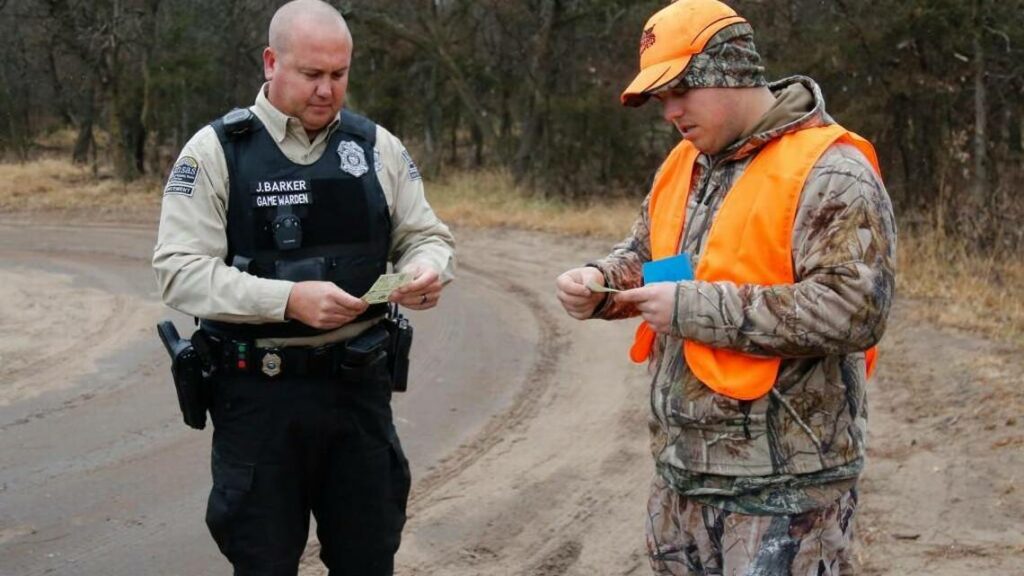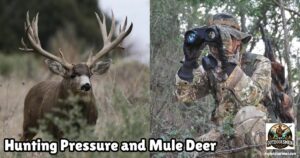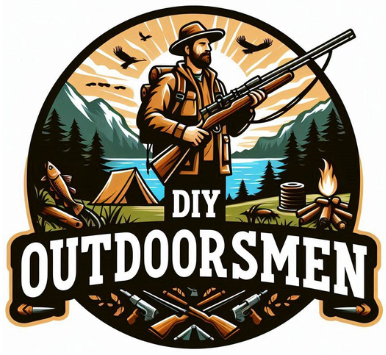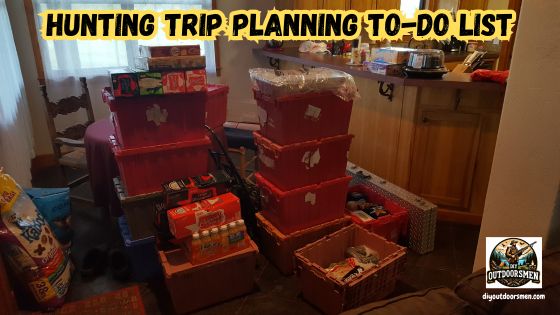Contents
- 1 Permits and Licenses: Ensuring Compliance
- 2 Hunting Trip Checklist Essential Tools and Attire
- 3 Hunting Trip Checklist – Nutrition and Hydration
- 4 Understanding Rules and Regulations: Knowledge is Key
- 5 Hunting Trip Checklist – Equipment Preparation
- 6 Prioritizing Safety: Making it a Core Practice
- 7 Celebrating Success: From Field to Table
- 8 Reflecting on Your Hunt: Enhancing Future Experiences
Hunting’s not just about the thrill of the chase; it’s equally about being in the right place at the right time. You need a good hunting trip checklist to keep you focused so you don’t forget something. But, it all starts by getting a solid understanding of your hunting destination.
KEY POINTS:
- Before anything else, pick a location that’s rich in the game you’re after. Look into the behavior and habitat of your target species as different animals have their unique patterns and preferences—they prefer certain types of terrains and specific times for activities.
- Next, check out the hunting seasons. These vary not only by species but also by region, so jot down these critical dates. You’ll want to time your hunt perfectly to align with not only legal seasons but also the peak activity times for the game. This information is often available through local wildlife agencies or experienced outfitters like Salt Plains Outfitters, which offer guided insights based on years of observing game patterns.
- Don’t forget to study the weather conditions. The gear you’ll need depends largely on the kind of weather you’ll be facing; trust me, being unprepared weather-wise can turn an exciting trip into a miserable one in no time. Checking out a detailed weather forecast for your destination can help you plan ahead and pack accordingly.
- Lastly, get to know the terrain you’ll be treading. Whether it’s dense woods, open plains, or marshy wetlands, each environment poses its own challenges. This will influence everything from the kind of boots you’ll wear to the navigation tools you’ll need. Maps, satellite images, and local guides can provide valuable insights into the lay of the land.
Connections with local experts or seasoned guides can often reveal much more than you’d find on a brochure or website. Many outfitters are familiar with the region’s intricacies and can provide firsthand knowledge about which areas are teeming with game and the specific strategies needed to hunt effectively there.
Permits and Licenses: Ensuring Compliance
Before even thinking of stepping into the wild, make sure all your paperwork is in order. It’s not just about avoidin’ fines; it’s about respecting sustainable hunting practices and ensuring you’re all set legally. Depending on where you’re huntin’ and what you’re after, you’ll need specific permits.
- A good place to start is your state hunting license. These are typically required regardless of the species or method of hunting. Got your eye on waterfowl? Then you’ll definitely need the Federal Duck Stamp if you’re in the U.S. and over 16. For bigger prey like deer or elk, you’ll need species-specific tags. Some hunting licenses cover small game without bag limits, while others need individual tags.
- Waterfowl hunters should also look into HIP certification—a quick registration process that’s all about keeping track of the species and the number harvested. It might seem like a hassle, but it plays a big part in conservation efforts.
- Don’t put this off till the last minute. Licensing processes can take time, and some states have limits on how many tags they give out. It might be a good idea to double-check the expiration dates on any previous licenses and permits too, just to keep things smooth and hassle-free.
- If you’re feelin’ stuck or unsure about what you need, local wildlife agencies are a great resource. Many states offer online options for purchasing permits, often along with detailed explanations of what’s required for different game types and regions.
Getting this part right means you’re legal, ready, and can focus fully on what’s important—enjoying the hunt.
Hunting Trip Checklist Essential Tools and Attire
Packing the right gear isn’t just about comfort; it’s what can make or break the whole hunt.
- Start with your weapon of choice, whether it’s a reliable rifle or a well-tuned bow. Make sure everything is sighted in and all safety checks are complete before you pack up. Keep ammo or arrows in ample supply, including some spares.
- Next, think about your clothing. Opt for camo or neutral shades that blend with your environment, helping you stay out of the game’s sight. Clothing is more than appearance, though. It’s all about layers—moisture-wicking base layers, insulating mid layers, and weather-resistant outer layers are the holy grail. Don’t skimp on sturdy boots either, especially if the terrain is rough or weather unpredictable.
- Now, on to the extras that can save the day. A sharp hunting knife is your best friend in the field for dressing game. If you’re after bigger game or waterfowl, decoys and calls might just tip the scales in your favor.
- Don’t overlook your safety essentials. A GPS device or a good old compass and map combo are crucial when venturing into uncharted areas. Always pack a first-aid kit; accidents happen and it’s better to be prepared than stuck in the wild without help. Equip your backpack with lots of pockets to organize your gear—snacks, water, and extra layers won’t seem like luxuries when you’re miles in.
- Lighting might not seem like a big deal, but a solid headlamp or flashlight with spare batteries is essential, especially if you plan to hunt in low-light conditions. It’s small pieces of gear like this that often get overlooked, but they make all the difference when you’re out there trying to be one with nature.
Hunting Trip Checklist – Nutrition and Hydration
Keeping your energy up is just as crucial as any other aspect of the hunt. Long hours in the field demand solid strategies for food and hydration. Start by stocking up on non-perishable snacks. Easy-to-carry options like protein bars, nuts, jerky, and dried fruits offer quick energy without weighing you down.
When it comes to hydration, don’t cut corners. Whether you prefer a hydration pack or standard water bottles, plan to carry enough to last the day. It’s vital to pace your water intake to prevent dehydration—even in cooler weather, your caffeine kick or victory sip can come later.
For longer trips, plan field meals like camping-ready options that are easy to heat up. Pre-packed meals can simplify your mornings and evenings out there, letting you focus on the hunt. If you’re using an outfitter service like Salt Plains Outfitters, double-check their dining options to see what’s included in their package.
Remember, food and water aren’t just sustenance—they’re morale boosters when the going gets tough. A well-fed hunter is not only more comfortable but also more focused and alert.
Understanding Rules and Regulations: Knowledge is Key
Navigating hunting laws can feel like a maze, but understanding them is a must to keep your hunt within legal bounds.
- Start by reviewing bag limits to know exactly how many animals or birds you’re legally allowed to take per day. These limits help ensure the conservation of wildlife populations, so following them is both a legal and ethical obligation.
- Legal shooting hours can surprise those unfamiliar with local norms. Be sure you know when you can legally start and stop hunting each day, as this can vary greatly between locations and game types. Missing these windows not only risks penalties but steals the thrill of those advantage-filled dawn and dusk hours.
- Check gear restrictions for the area, as some locations limit the type of weapons, ammunition, or even camo you can use for hunting specific species. Regulations may also affect the caliber of rifles or the kind of archery equipment permitted, so double-check to avoid complications.
- Doing your homework by visiting the local wildlife agency’s website can clear up any confusion. Many regions offer comprehensive guides that break down laws and best practices, covering everything from protective gear requirements to specific hunting zones.
- If you’re hunting with a guide or outfitter, utilize their expertise. Their local knowledge can keep you informed about any rule changes or specific permits that may apply to your hunt.

Keeping well-versed in these rules not only guards against fines and lost hunting privileges but also enhances the overall ethical footprint of your hunting practice.
Hunting Trip Checklist – Equipment Preparation
Getting your equipment ready isn’t just a checklist task—it’s critical to your success and safety in the field. Start by giving your firearms or bows a thorough inspection. Ensure everything’s clean and in top working order, which will save you from surprises that might cost you that perfect shot.
Once your weapons are set, test all your gear to make sure it fits and functions as it should. Clothing should be comfortable and allow freedom of movement. Boots need to be broken in to avoid blisters when you’re miles deep into the wilderness.
Bring along some spare parts and tools for quick repairs. Extra batteries for your electronics, like GPS units or flashlights, are essentials you won’t regret packing. Scope covers or repair kits for minor equipment issues can be game-changers in the field.
Safety doesn’t end with weapon maintenance, though. Ensure safe transport by securely packing your gear to avoid damage over bumpy trails. Use protective cases for firearms and place lighter gear around heavier items to cushion knocks.
Thinking ahead to avoid gear mishaps makes for a smoother, less stressful hunting experience. Tuning everything up at home means fewer problems out there, so you can focus on the thrill of the hunt.
Prioritizing Safety: Making it a Core Practice
- Safety comes first, no matter how experienced you are. Taking a hunter safety course can equip you with not just the know-how but also the confidence to handle situations safely in the field.
- Before heading out, always inform someone you trust about your plans—where you’re going, who you’re with, and when you expect to return. It’s a simple step that adds a safety net if things go sideways.
- Don’t leave for your trip without a reliable communication device. A fully charged cell phone or, even better, a satellite phone, ensures you remain connected if you wander into areas without service.
- Situational awareness is crucial. Always be conscious of your surroundings and the locations of your hunting partners. Clearly identifying your target and what’s beyond it is vital to prevent accidents.
- When it comes to safety practices, wearing blaze orange gear can’t be overstressed. Other hunters need to spot you as early as possible, especially during high-traffic seasons.
Effective safety measures aren’t just about navigating the wilderness—they make sure every hunt ends with a great story, not an emergency.
Celebrating Success: From Field to Table
When your hunt pays off, it’s time to handle your harvest with care and respect.
- Start with a proper field dressing kit. This isn’t just about knives—grab some quality gloves to maintain hygiene and use game bags to transport your haul cleanly and efficiently.
- A portable cooler is your best bet for getting your game home in top condition. Fill it with ice packs beforehand so it’s ready to preserve the meat as soon as you’ve field dressed your game. Temperature control will keep your meat fresh, enhancing its taste and quality later on.
- Cleaning supplies aren’t just for after the hunt—they’re essential for keeping your gear in prime condition. Sanitize knives and tools promptly to prevent rust and maintain sharpness. It’s a small task that pays huge dividends over time.
- Once you’ve managed the immediate post-hunt tasks, consider how you’ll transform your game into memorable meals. Whether you’re planning to roast, smoke, or grill, anticipating the process beforehand can make preparation easier, letting you enjoy the full fruits of your labor.
Each step in handling your game responsibly ensures not only a delicious reward but also maintains the integrity of the hunt, respecting the wildlife and the craft itself.
Reflecting on Your Hunt: Enhancing Future Experiences
Each hunting trip brings its own set of learnings and stories. Taking time to reflect on what worked and what didn’t sets the stage for even better adventures in the future.
- Review any challenges you faced with your gear or planning. Were there moments when you felt unprepared, or did something exceed your expectations? Jot these down to revisit before your next trip. Improvement is part of the journey.
- Keep records of your observations and experiences in the field. Noting down weather conditions, game patterns, and even subtle changes in the landscape can be invaluable for future hunts.
- Networking with fellow hunters and sharing stories or tips can broaden your perspective. Learning from others’ wisdom and mistakes strengthens the hunting community as a whole.
- Consider maintaining a journal or digital log of your hunts. Photos, notes, and even maps can help preserve the memories and practical insights that time might fade.
Reflecting not only helps in honing your skills but also enriches your passion for the hunt. Every trip is an ongoing opportunity to deepen your understanding of the wilderness and yourself.
Check Out These Other Hunting Tips
- Bow Hunting For Mule Deer

- Best Public Land Mule Deer Hunting

- Drone-Based Scouting Services For Mule Deer

- Late Season Mule Deer Hunting Tips

- 8 Tips for Dealing with Hunting Pressure While Mule Deer Hunting

- TideWe Portable Hunting Blinds

As always, stay safe, enjoy the journey and please try to leave it cleaner than you found it. If you have any comments, questions, ideas, or suggestions please leave them in the comment section below and I’ll get back to you ASAP. You can follow us on YouTube: Man Art Creations for videos of our DIY Adventures.
P.S. – Thanks so much for checking out our blog we really appreciate it. Just so you know, we may receive a commission if you click on some of the links that appear on our site. This helps us keep our content free and up-to-date for everyone. We appreciate your support!



